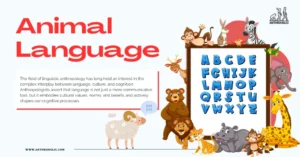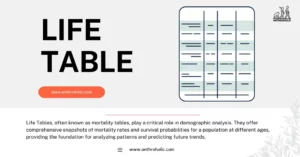AI Answer Evaluation Platform Live Now. Try Free Answer Evaluation Now
Distinction between Technique Method and Methodology
Understanding the concepts of technique, method, and methodology, and their differences is pivotal to various fields, especially research, education, and management. Though these terms are sometimes used interchangeably, they carry distinct meanings that shape their usage in specific contexts.

Techniques: The Tools of the Trade
Techniques represent the practical ways or procedures employed to perform specific tasks. These are practical skills, or ‘how-tos,’ developed and improved over time through experience and practice.
- For instance, in cooking, techniques might include dicing vegetables, kneading dough, or tempering chocolate.
- In a research context, techniques could encompass tools like interviews, surveys, or statistical analyses.
Key Points
- Techniques are practical procedures used to accomplish specific tasks.
- They are usually learned through practice and experience.
- Techniques can be highly specialized depending on the field or task.
Method: A Guided Approach
A method can be perceived as an organized, logical, and systematic procedure used to achieve a goal or solve a problem. It comprises a series of steps, often making use of specific techniques within these steps.
- In education, for example, the Montessori method encourages self-directed activity and hands-on learning [1].
- In research, the scientific method involves steps like formulating a hypothesis, designing and conducting an experiment, analyzing data, and drawing conclusions [2].
Key Points
- Methods are organized and systematic procedures.
- They consist of a series of steps, often utilizing specific techniques.
- Methods are designed to solve problems or achieve goals.
Methodology: The Science Behind the Process
Methodology refers to the systematic, theoretical analysis of the methods used in a field of study. It not only outlines the methods but also explains why certain methods and techniques are used over others. Methodology thus provides a framework that guides the selection, use, and interpretation of the techniques and methods employed.
- For example, in a research study, a qualitative methodology might be chosen to gain in-depth insights into human behavior, using methods like interviews or focus groups and techniques such as open-ended questioning [3].
- In software development, Agile methodology is used for managing complex projects. It incorporates various methods like Scrum or Kanban, and techniques such as sprints or stand-ups [4].
Key Points
- Methodology refers to the theoretical analysis of the methods applied in a field.
- It provides a framework that dictates the selection, use, and interpretation of methods and techniques.
- Methodology explains the ‘why’ behind the chosen methods and techniques.
The Interplay: Technique, Method, and Methodology
This diagram represents the relationship between these three concepts. Techniques form the base, implemented within the structure of methods, all of which operate under the guiding principles of a methodology.
Key Points
- Techniques are the building blocks, the practical procedures carried out.
- Methods provide an organized structure for employing techniques.
- Methodology offers a theoretical framework guiding the selection and application of methods and techniques.
Applications and Implications: Making Practical Use of the Distinctions
Understanding these three concepts – technique, method, and methodology – can dramatically enhance your effectiveness across a variety of fields. Each concept provides a different level of perspective and utility.
A Case in Education: Technique, Method, and Methodology in Action
To illustrate the practical application of these concepts, let’s consider a real-world example in education. Imagine you’re an English teacher tasked with improving your students’ essay writing skills.
- Techniques might include outlining an essay, developing a strong thesis statement, or incorporating evidence to support an argument.
- Your chosen method could be a systematic approach, such as introducing and practicing one technique at a time, providing examples and exercises, then combining all techniques for a full essay writing assignment.
- Your methodology could be constructivist learning, which emphasizes active student participation and “learning by doing.” This methodology guides your selection of the particular methods and techniques used [5].
The Business World: Implementing Agile Methodology
In the realm of business and software development, the distinctions between technique, method, and methodology become evident in the popular Agile methodology.
- Techniques within Agile might include daily stand-ups, retrospectives, and pair programming.
- Scrum and Kanban, among others, are methods that structure and organize these techniques to promote productivity and efficiency [6].
- The Agile methodology, based on the Agile Manifesto, provides the theoretical framework that prioritizes individuals and interactions, working software, customer collaboration, and responding to change [7].
A Distinction that Makes a Difference: Reflecting on Practice
By elucidating the differences between technique, method, and methodology, we can more accurately reflect on our practices and how they might be improved. Each concept provides a different ‘zoom level’ for understanding and addressing the tasks we undertake. Armed with this understanding, we can make more informed decisions, tailor our practices to specific contexts, and enhance our effectiveness in any field of endeavor.
References
[1] Lillard, Angeline Stoll. “Montessori: The science behind the genius.” Oxford University Press, 2017.
[2] Gauch, Hugh G. “Scientific method in practice.” Cambridge University Press, 2003.
[3] Denzin, Norman K., and Yvonna S. Lincoln. “The Sage handbook of qualitative research.” Sage, 2011.
[4] Highsmith, Jim. “Agile project management: creating innovative products.” Addison-Wesley Professional, 2004.
[5] Brooks, Jacqueline Grennon, and Martin G. Brooks. “In search of understanding: The case for constructivist classrooms.” ASCD, 1999.
[6] Kniberg, Henrik. “Scrum and XP from the Trenches.” InfoQ, 2007.
[7] Beck, Kent et al. “Manifesto for Agile Software Development.” Agile Alliance, 2001.



